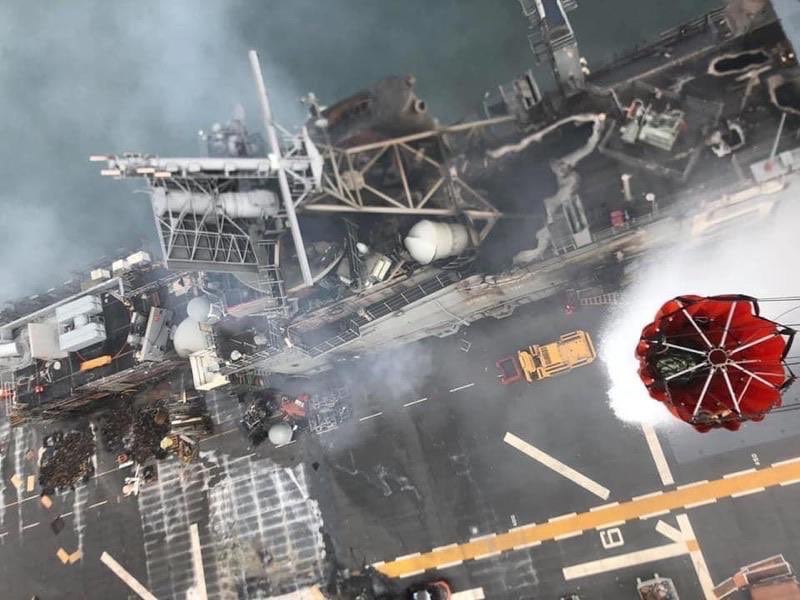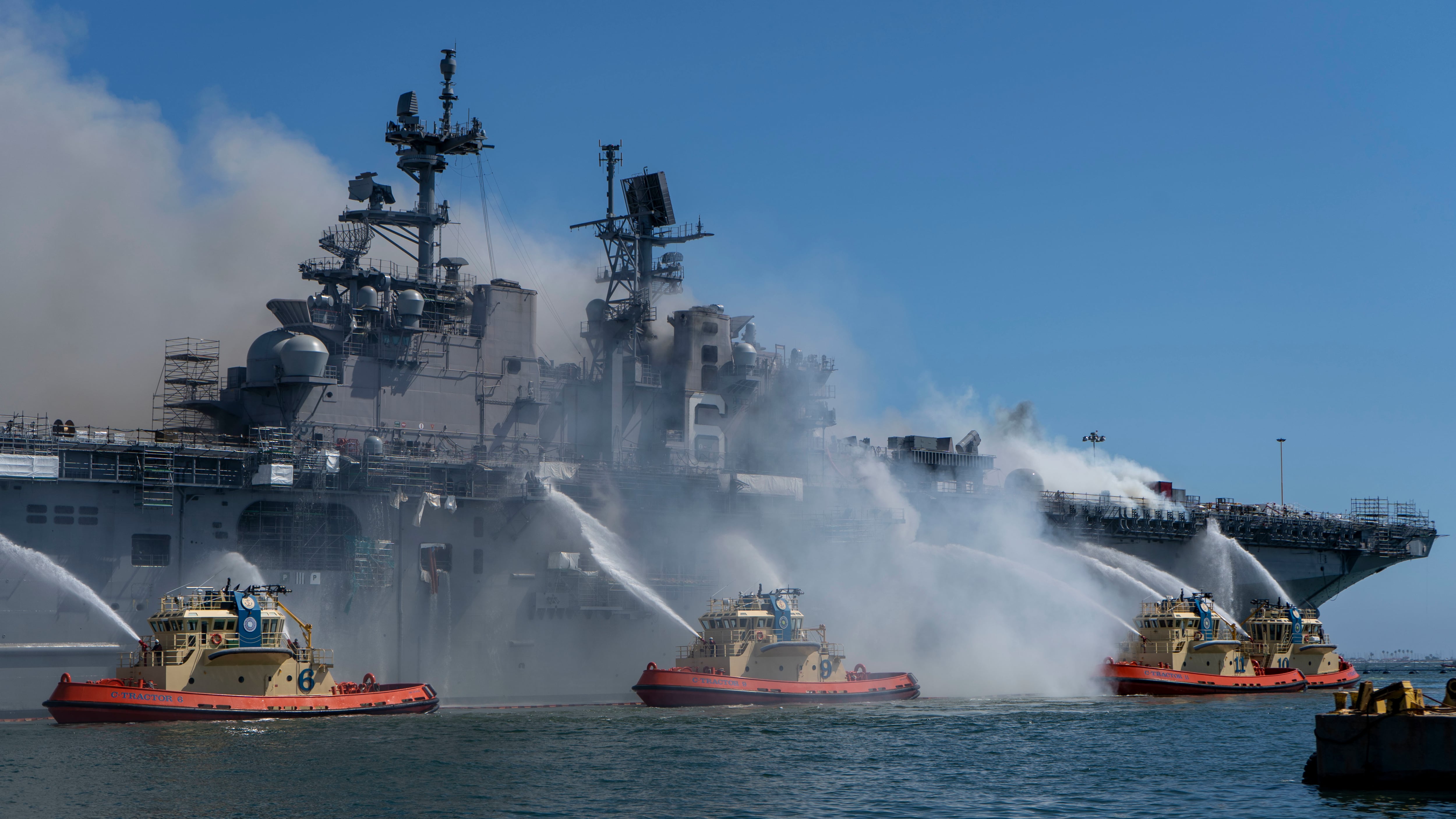While the U.S. Navy has yet to reveal what caused a disastrous multi-day inferno aboard the 22-year-old amphibious assault ship Bonhomme Richard in July 2020, sending it to the scrapheap in the process, the head of the surface fleet said Thursday that reforms have been put in place to prevent such a mishap from happening again.
Bonhomme Richard was undergoing maintenance at the shipyard in San Diego when the fire broke out.
Officials said the primary investigation into the fire is expected to be released later this summer.
But when it comes to preventing another such mishap in the yards, Vice Adm. Roy Kitchener, the head of Naval Surface Forces, told reporters that several initiatives have already been implemented.
A review of shipyard practices after the fire found room for improvement, Kitchener said.
“We found that in some cases, we weren’t doing as well as we should have,” he said. “When we got to the industrial environment, it looks like there needs to be a little education and a little spot checking, forceful backup in complying.”
The Navy has since hired fire marshals that go out and evaluate the training the ship crews receive for fighting fires in an environment like a shipyard, Kitchener said.
“They’re out there ensuring the waterfront maintenance people, along with private contractors and the ship’s crew, are doing their proper safety inspections,” he said.
Kitchener added that the Navy had made “some significant investments in high-end fire detection systems we now install on ships.”
Officials said last summer that the ship’s Halon fire suppression system was turned off when the amphib caught fire due to the maintenance work.
RELATED

Training for officers heading into command regarding ship safety in an industrial environment has also been implemented, and a type command-level damage control officer have traveled to shipyards with a team to practice integrated response drills with local fire departments and a ship’s force, Kitchener said.
While details have yet to be made public, officials said last year that the blaze is believed to have started in the “Lower V” cargo hold in the ship, a large storage space.
Chief of Naval Operations Adm. Mike Gilday said last summer that strong winds off the bay helped push the blaze from its starting point to elevator shafts and exhaust stacks, which helped move forward an inferno that eventually reached 1,000 degrees at times during the four-day fire.
Geoff is the managing editor of Military Times, but he still loves writing stories. He covered Iraq and Afghanistan extensively and was a reporter at the Chicago Tribune. He welcomes any and all kinds of tips at geoffz@militarytimes.com.





